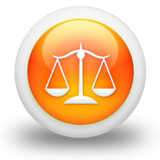We need your consent to use the individual data so that you can see information about your interests, among other things. Click "OK" to give your consent.
ASTM E2859-11
Standard Guide for Size Measurement of Nanoparticles Using Atomic Force Microscopy
STANDARD published on 1.12.2011
The information about the standard:
Designation standards: ASTM E2859-11
Note: WITHDRAWN
Publication date standards: 1.12.2011
SKU: NS-46162
The number of pages: 9
Approximate weight : 27 g (0.06 lbs)
Country: American technical standard
Category: Technical standards ASTM
The category - similar standards:
Annotation of standard text ASTM E2859-11 :
Keywords:
atomic force microscope, AFM, calibration, cantilever de&fllig,ection, contact mode, functionalized substrate, gold nanoparticle, height displacement, intermittent mode, nanoparticle, nanoscale measurement, particle deposition, particle size, tapping mode, ICS Number Code 07.120 (Nanotechnologies)
Additional information
| Significance and Use | ||||||||||||
|
As AFM measurement technology has matured and proliferated, the technique has been widely adopted by the nanotechnology research and development community to the extent that it is now considered an indispensible tool for visualizing and quantifying structures on the nanoscale. Whether used as a stand-alone method or to complement other dimensional measurement methods, AFM is now a firmly established component of the nanoparticle measurement tool box. International standards for AFM-based determination of nanoparticle size are nonexistent as of the drafting of this guide. Therefore, this standard aims to provide practical and metrological guidance for the application of AFM to measure the size of substrate-supported nanoparticles based on maximum displacement as the probe is rastered across the particle surface to create a line profile. |
||||||||||||
| 1. Scope | ||||||||||||
|
1.1 The purpose of this document is to provide guidance on the quantitative application of atomic force microscopy (AFM) to determine the size of nanoparticles deposited in dry form on flat substrates using height (z-displacement) measurement. Unlike electron microscopy, which provides a two-dimensional projection or a two-dimensional image of a sample, AFM provides a three-dimensional surface profile. While the lateral dimensions are influenced by the shape of the probe, displacement measurements can provide the height of nanoparticles with a high degree of accuracy and precision. If the particles are assumed to be spherical, the height measurement corresponds to the diameter of the particle. In this guide, procedures are described for dispersing gold nanoparticles on various surfaces such that they are suitable for imaging and height measurement via intermittent contact mode AFM. Generic procedures for AFM calibration and operation to make such measurements are then discussed. Finally, procedures for data analysis and reporting are addressed. The nanoparticles used to exemplify these procedures are National Institute of Standards and Technology (NIST) reference materials containing citrate-stabilized negatively charged gold nanoparticles in an aqueous solution. 1.2 The values stated in SI units are to be regarded as standard. No other units of measurement are included in this standard. 1.3 This standard does not purport to address all of the safety concerns, if any, associated with its use. It is the responsibility of the user of this standard to establish appropriate safety and health practices and determine the applicability of regulatory limitations prior to use. |
||||||||||||
| 2. Referenced Documents | ||||||||||||
|
Similar standards:
Historical
1.9.2013
Historical
1.5.2007
Historical
1.4.2012
Historical
1.4.2012
Historical
1.9.2013
Historical
1.1.2012
We recommend:
Updating of laws
Do you want to be sure about the validity of used regulations?
We offer you a solution so that you could use valid and updated legislative regulations.
Would you like to get more information? Look at this page.



 ASTM D7385-13
ASTM D7385-13 ASTM E1268-01(2007)..
ASTM E1268-01(2007).. ASTM E1620-97(2012)..
ASTM E1620-97(2012).. ASTM E2834-12
ASTM E2834-12 ASTM E2864-13
ASTM E2864-13 ASTM E2865-12
ASTM E2865-12
 Cookies
Cookies
